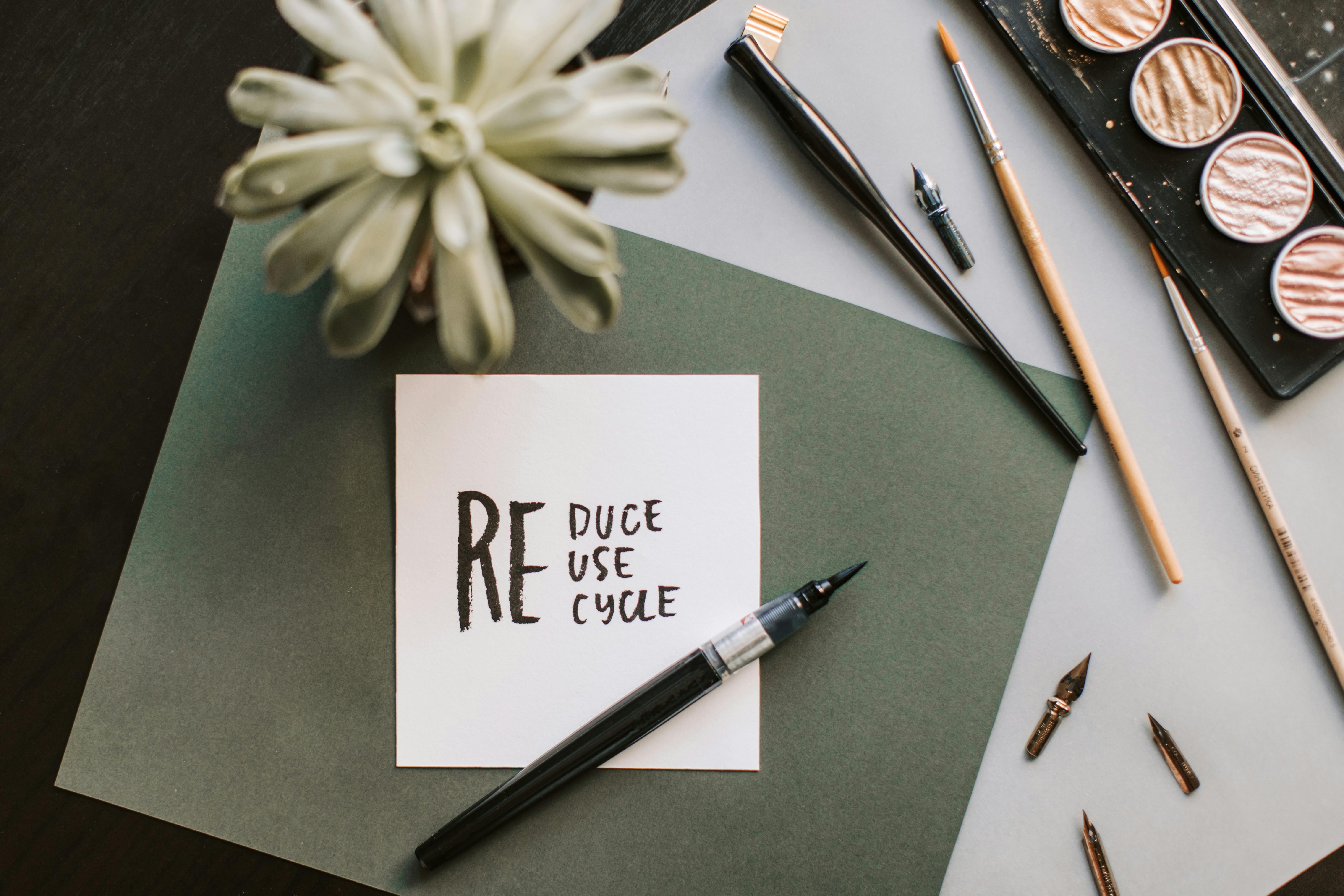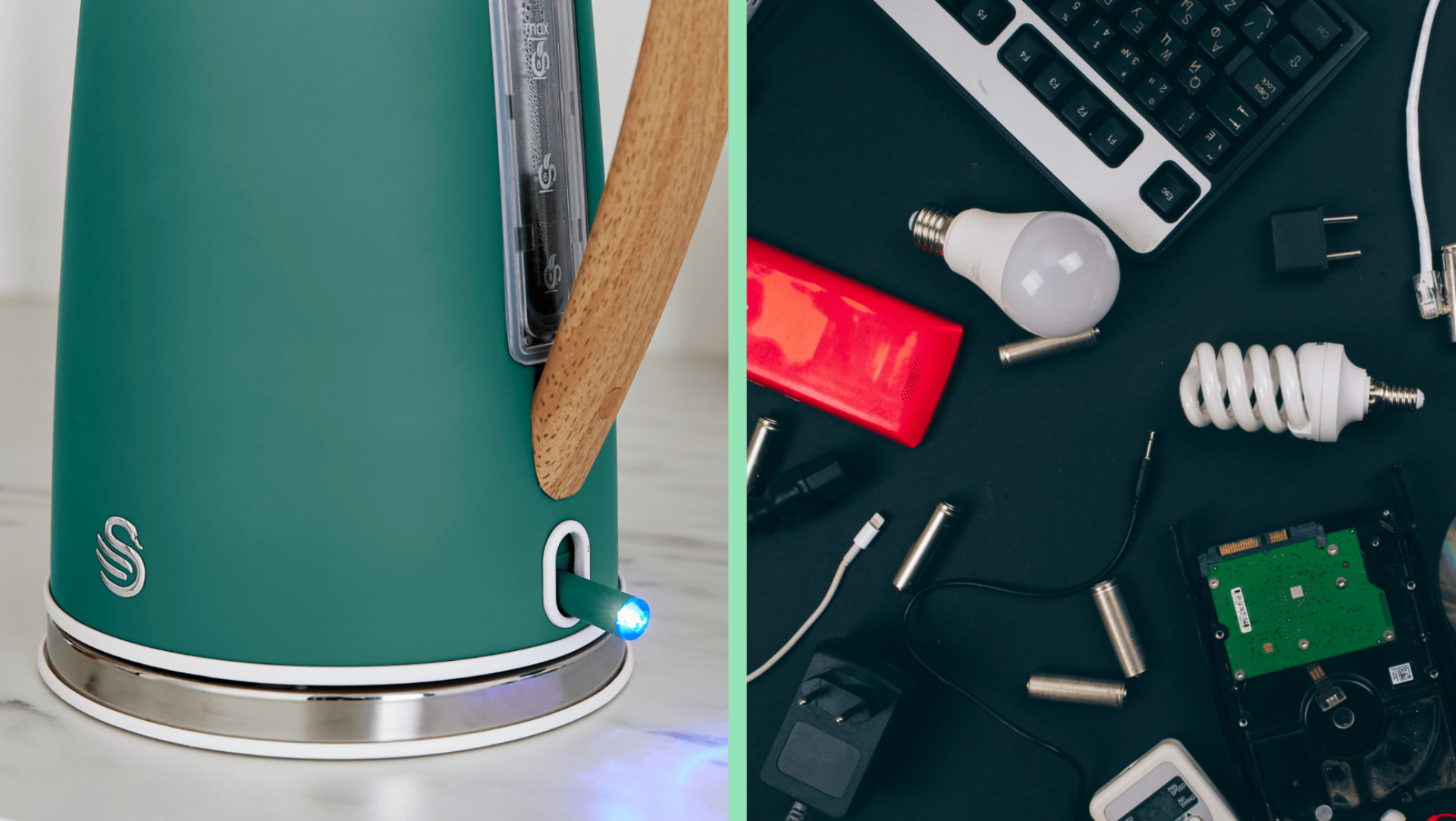Since you’re buying a new household item, we thought you might benefit from knowing how to dispose of your existing items safely and efficiently. Your unwanted appliances might have a long way to go before being deemed unusable or unfit for use, and we’re here to help.
Have you fallen out of love with your kitchenware? Do you have appliances lying around that your household no longer require? We understand that trends, fashions and lifestyles change at a rapid pace, so it’s good to know how to dispose of no longer used items while remaining environmentally friendly.
Here, we’ll guide you through the correct ways of getting rid of your used items. It is now that we can all pull together to do things in the eco-friendliest way possible. Don’t bin- recycle, donate and dispose of correctly.

Disposal Advice
Recycle More advise that the number one rule with most unwanted electrical items is to assess if they are recyclable. As well as with our household waste, we all should be checking what can and cannot be recycled to do our part for the environment.
Statistics show that approximately 170 million electrical items are purchased every year in the UK. And only one-third portion of that figure is recycled when the appliances reach the end of their lifecycle.

If you want to identify if a no longer usable electrical item is recyclable, there are some checks you need to do before going ahead. If any of the below elements are applicable, your electronic goods are recyclable.
– Does your item have a plug?
– Is your item operated by a battery?
– Does the item require charging?
– Is there a picture displayed on the item with a crossed-out bin on it?

These are the things to avoid while recycling electrical equipment:
– Do not try to recycle light bulbs.
– Do not put electric cords or wires in your recycling bin as they can tangle and cause harm to the equipment of the e-waste recycling companies.
– Do not send lithium-ion batteries to recycling facilities as they can cause a fire.
– Do not dispose of electrical items in your home recycling bin.
Recycle Your Items
Recycling is the most effective and sustainable way of disposing of faulty electrical items. Find out more here.
Recycle More state that the amount of electrical waste we throw away is increasing by roughly 5% each year (this is now the fastest growing waste stream in the UK). The electrical items disposed of and not recycled end up in landfills- this results in hazardous substance leakage, causing soil and water contamination (which is harmful to wildlife and human health).
A concerning 75% of electrical goods waste end up in landfills. Find out more here.

One of the main reasons for this increase is our current ‘throw-away lifestyle’ where we use the things we own once and soon throw them away. To find out more here.
A mark with a crossed-out wheelie bin symbol means that the items cannot be thrown away via your general waste bin and must be disposed of correctly. Our electrical goods are marked with this symbol to ensure they are thrown away in the safest and most environmentally cautious way possible.
You can locate your nearest recycling centre, have your goods collected or take your equipment to your local centre. Here, your items will move through a conveyor belt, where various types of plastics and useful components are filtered out for reuse. The shredder then breaks the rest of the body into small pieces. Find out more here.

Recycle Now can help you recycle and pass on your unwanted items for reuse with where to recycle, how to recycle at home and how to find your nearest recycling locations.
Electrical items Recycle Now can help you recycle: Electrical Home Tools, Electric Cookers/Ovens, Refrigeration, Microwaves, Toasters, Kettles, Vacuums and much more.
Want to know how to recycle goods, item by item? Check out Recycle Now’s item category section to help you decide what item is best suited to which way of disposing of.
Having trouble recycling at home? Recycle Now are here to help.

What is WEEE?
WEEE, Waste Electrical or Electronic Equipment Directive requires countries to maximise separate collection to help benefit the environment. WEEE aims to reduce the amount of EEE equipment incinerated or sent to landfill sites and is becoming the fastest-growing e-waste stream.
Household appliances such as Irons, Kettles, Food Processors, Electric Cookers and Toasters fall under WEEE. Further information on WEEE is available here.

Donate Your Items to The British Heart Foundation
You can donate your unwanted homeware and electrical items using British Heart Foundation’s free collection service. Fill in your postcode here to get started.
The British Heart Foundation collect the below Electrical Appliances. (FYI, we’ve only noted the electrical items that we sell, click here to find out more).
Household Tools: Kitchen Appliance (Small), Kitchen Appliance (Medium), Microwave, Kettle, Toaster, Iron, Multi Coffee Machine, Vacuum Cleaner/Carpet Cleaner, Steam Cleaner, Hair Dryer/Straighteners/Curlers
Heating/Air Con: Heater, Radiator, Fan, Dehumidifier, Electric Fire, Air Conditioning Unit (Vented/Unvented)
Sound: Radio

The BHF ensure that you make sure that
- All items are in saleable condition.
- You have checked our list of items we cannot take for legal or health and safety reasons. This list includes Knives, Refrigeration and Oil Filled Radiators.
Find the full list of items the BHF cannot sell here.
If you have any questions or want to drop off your donated items in person? Visit this link to contact your nearest BHF shop or furniture and electrical store.

Gift or Resell Your Items
If your electrical item is in working order and you still want to discard it? Perhaps you could consider making the most out of it by letting someone else fall in love with it like you once did.
An easy way to get rid of your working electrical items is by popping a picture of them into your family/friend group chat! You never know who might need the electrical goods you’re planning to discard. And this transaction will always create the need for a catch-up, so have a brew and dispose of your handy electrical goods with ease.
We could all do with some extra cash here and there! So, why not put your electrical goods on second hand selling websites such as eBay or Gumtree? Check out the Best Second-Hand Selling Apps to Sell Stuff article to help you find the most suitable way to sell your used items with ease. Please note that if you intend to sell your items, they must be safe and in working order.

Repair Your Items
Do you want to dispose of your goods because they seem broken?
At Swan, we’re paying strong attention to and influencing a ‘buying better’ lifestyle and influencing the idea that goods could be recycled, reused, repurposed or repaired. As the cost of living rises, we all could benefit from making the things we pay for last as long as possible.
If you have a Swan item that you think is faulty, visit this link to find the product’s instruction manual or our helpline area for support. Our instruction manuals ensure you know how to take the best care of your item and give it its maximum possible lifespan.
We’ve seen Swan items last a lifetime and passed down over multiple households and generations. Check out our heritage stories here to see how sustainable our products really are.

Repurpose Your Items
Repurposing your items means you’ll be reinventing them, preventing any need for sad goodbyes. This way, your long-loved appliance has the opportunity to last through family households, adding character, generation after generation.

Whether you change your glass kettle into a fish tank or your refrigerator into shelving, we’ll be impressed with you for keeping your appliance going! The essential tip from us when repurposing your items is to get creative. Spoiler alert, fish tanks are a thing.
Here Pinterest shows off Kitchen Appliance Upcycle, Reuse, Recycle, Repurpose DIY tips. Check out these unbelievable household item hacks here.

Bobvila have also shared 10 Weirdly Awesome New Uses for Old Appliances. There’s a worldwide understanding that household must-haves don’t last forever, but by repurposing them, they can! Plant Pot Coffee Makers to Food Blender Light Shades, these ideas are beyond impressive.
This article from Ransom Spares offers The Best (tried and tested) Reduce, Reuse and Recycle Tips from 14 DIY Experts. A ‘make & mend’ culture is essential and promoted throughout. Also, the fact that the tips are coming from DIY experts gives us more confidence in trying these things ourselves!
These inspirational ideas and tips support the proposal that anything is possible, whether fixing your appliances or turning them into something you never thought you could! Repurposing is an opportunity to surprise yourself with unique creativity- you got this!

Stay Safe
We hope we’ve helped provide you with as much information as possible on recycling your electrical goods and that you now know how to dispose of your existing items safely and efficiently.
Whether you’re reselling, gifting, donating or recycling, please ensure you dispose of your electrical equipment correctly and in the safest way possible.
We all must act on helping our environment and minimise our harmful impact on this earth. Here at Swan, we want to raise awareness of the consequences of our actions and how we can all make a difference.




